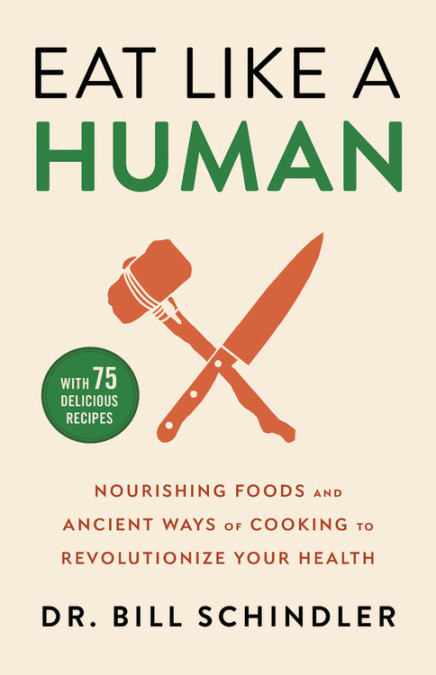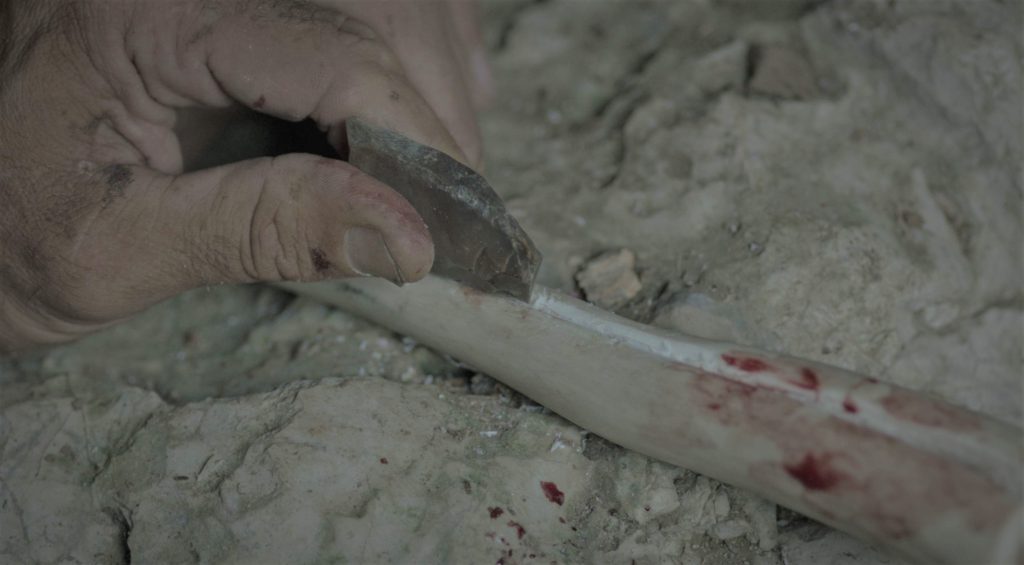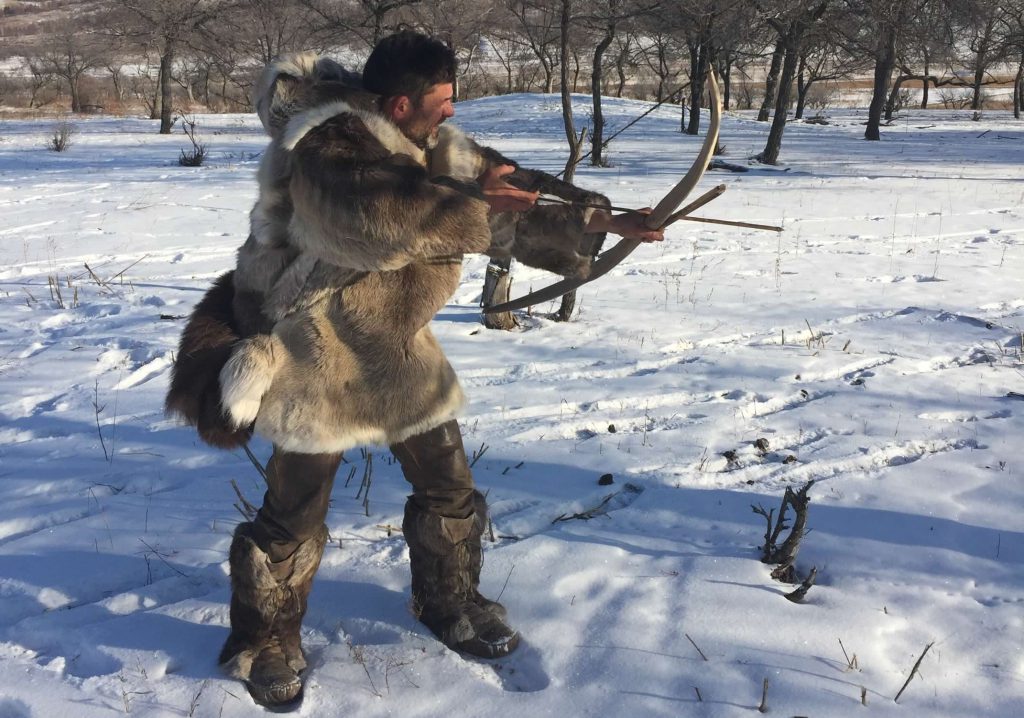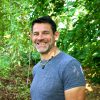The Diet of the Future Is a Menu That Draws From the Ancient Past
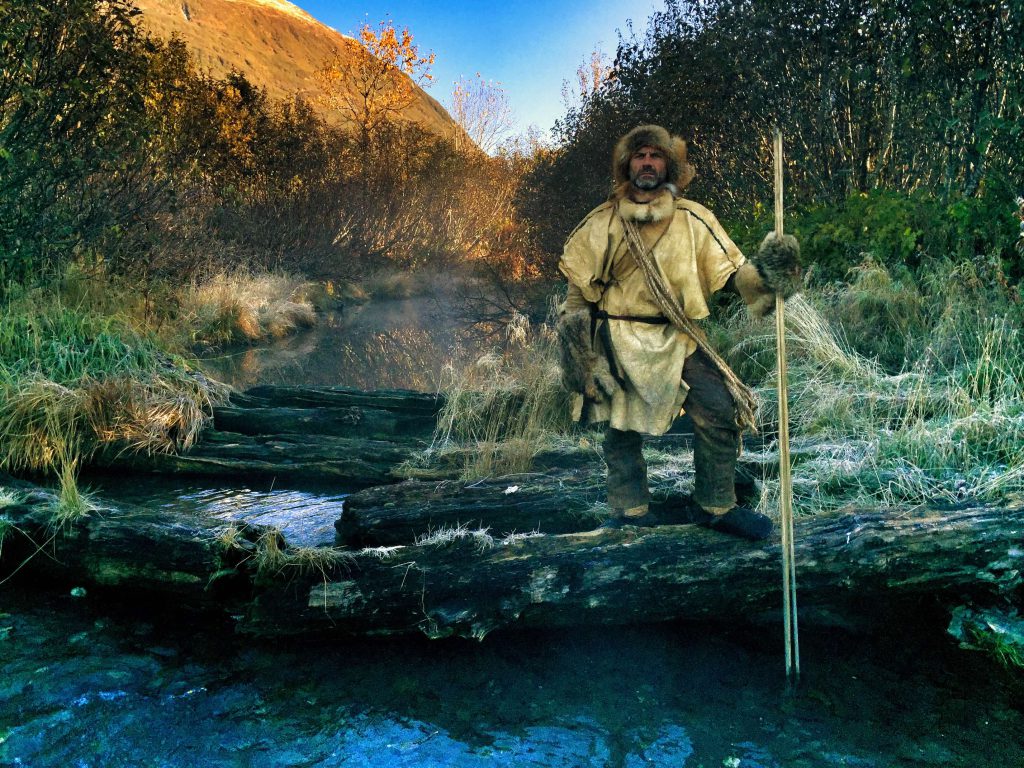
Excerpted from Eat Like a Human: Nourishing Foods and Ancient Ways of Cooking to Revolutionize Your Health by Bill Schindler. © 2021 by Bill Schindler. Used with permission of Little, Brown Spark, an imprint of Little, Brown, and Company. All rights reserved.
It was the opportunity of a lifetime. I was starring in National Geographic’s The Great Human Race, a television series in which I was tasked with finding food and shelter using only the tools available during particular time periods of our evolution as humans. In Tanzania, I replicated a 2.5-million-year-old Oldowan toolkit to scavenge meat from a carcass on the savanna as fast as I could before the lions returned. In Mongolia, I used bone and stone tools to hunt rabbit, and in the Republic of Georgia, I replicated a 40,000-year-old spear point to take down a wild boar with an atlatl. I felt hunger; I felt fear; I felt fierce joy and relief when I successfully hunted or found wild food that sustained me.
But now, here I was in Alaska, ostensibly in a bitter winter some 15,000 years ago, when ancestors were attempting to cross what was then the Bering Land Bridge from Asia to North America. After two days of barely surviving with no food on the Arctic tundra, where ripping winds drove snow across endless miles of ice-glittered scrub, my co-star and I had walked south far enough for the snow to change to an icy rain, and before us was a pond with a beaver lodge. We desperately needed protein and fat to keep going, and I scouted the pond edge to find a place to set a primitive snare to trap a beaver. Once I found it, I knew my choices were stark: Go into the freezing pond buck naked and then put my dry clothing back on; go into the pond fully clothed and come out in sopping deerskin clothes, risking hypothermia at best, death at worst; or finally, not go into the pond at all and spend another night sleepless and starving.
God, I was cold! My hands were freezing up as I frantically worked to prepare as much of the trap as I could before stripping down and wading in to set the critical anchor—three atlatl darts I would stab into the bottom of the pond to form a kind of tripod, and to which I would attach the snare’s anchor line. Behind me the mountains loomed like gray giants of mist, fog, and rock, the sky a leaden menace threatening more snow any minute.
You might think that at this point, all I was worried about was success—fully setting the trap and getting my freezing butt out of the water and back to a warm fire. You’d be wrong. What was freaking me out was not the cold, the hunger, or even the way my steaming breath was coming in gasps and my limbs shook uncontrollably. It was the fact that I was about to get naked in front of an entire production crew, two cameras, and a drone. Let’s be honest: This was a television show. If I failed to find food, the crew wasn’t going to let me die out here. But my commitment to this project was to take it as close to the edge as possible—to truly begin to grasp the challenges that our ancestors faced and overcame—and that meant stripping and walking into a freezing pond in front of all these people (and knowing that this scene would be aired before millions of viewers). And I have never felt comfortable taking even my shirt off in public. Ever.
If you watch this episode, you’ll see that I look strong, athletic, ripped. But it wasn’t always this way—far from it. And the fear I was feeling at this moment drew deep from what had been, for so much of my life, my unhealthy relationship with food. It’s a story I suspect some of you can relate to in one form or another.
As a chubby, awkward kid growing up in the U.S., I was picked on for my size. I didn’t feel like food was something that nourished me. Food was something that scared me. It was something that made me fat. It was something that made other kids make fun of me. Then I became a wrestler in high school, eventually making the varsity team at one of the country’s top Division 1 college programs. And I traded one unhealthy relationship with food for another. Food became something that prevented me from making my competitive weight. I binged and purged and fought with food—repeatedly and regularly losing and regaining more than 20 pounds a week! And after college and wrestling, the weight piled on with a vengeance, and I became an overweight adult. With that came health issues like irritable bowel syndrome, metabolic syndrome, even joint pain.
Read more about Bill Schindler’s research: “Did Processed Food Make Us Human?”
All the while, I was constantly—to the point of obsession—trying to figure out what to eat. Over decades of research that encompassed experimental archaeology and studies of ancient technologies, and took me from fieldwork with Indigenous and traditional peoples around the world to the professional kitchens of global Michelin star chefs, I sought to answer that question: “What should I eat?” And I began to find the answers only when I realized that, all along, that’s not the only question I should have been asking.
While some people may be asking “What should I eat?,” the equally—if not more—important question that must accompany this is “How should I eat?” Most people will take the latter question quite literally, as in “What time should I eat?” or “How much should I eat?” or “Should I eat slowly?” But in the context of my latest book, Eat Like a Human, I ask readers to expand their thinking about this word beyond those literal questions. Instead, I ask them to consider how as a concept that is directly connected to what our ancestral dietary past can teach all of us about our relationship to food today.
A modern human predicament is that today people can eat to obesity and still be malnourished. This reality has everything to do with the ways many of us as individuals, as well as our cultures and food systems, have strayed from the fundamental dietary imperative of our ancestors: how to eat the safest, most nutrient-dense, bioavailable foods possible. Hewing to that imperative is literally what made us human. To begin to understand it, we have to shift some perspectives and go back in time.
Of course, I’m not suggesting that we all learn how to hunt with an atlatl and butcher our catch with a handcrafted obsidian blade. (Although, trust me, it’s fun and rewarding to try these technologies!) We humans may be essentially biologically the same—with the same nutritional needs—as we were 300,000 years ago, but we are living in the 21st century. Our expectations about how food should taste, smell, and look—and even the way we present it and gather to consume it—are often entirely different. Our ability to incorporate ancestral and traditional food technologies into our lives requires planning and time. Some of us have a lot more of the latter than others.
Nor would I expect you, for instance, to trash everything in your pantry, dump out your refrigerator, and upend your life to make a radical change (in fact, I recommend against it). For some of you, even a small foray into the “how” of food may be sufficient. But if you’re reading this, I suspect that food and your relationship to it is a subject into which you’ve already put a lot of time and thought. And it’s likely you have genuine concerns for how our diet impacts the world around us, perhaps even goals for sustainability, ethics, and economics in the way that we feed ourselves. For all those reasons, I believe the diet of our future should absorb the lessons of our past and blend them with modern culinary arts and foodways to create a food system and philosophy that can meet our contemporary cultural expectations while creating foods that are deeply nourishing and sustainable.
On the Alaskan tundra, freezing in a beaver pond in a desperate attempt to find a calorie-rich, nutrient-dense meal, all of these realities were slamming into me—my childhood as a chubby kid burdened by a self-destructive relationship with food; my lifework of understanding primitive technologies and ancestral foodways so that I could better feed myself and my family; my yearning to know more about how our ancestors created the technologies to overcome so many physical deficiencies and beat the survival odds.
The snare I was setting—using cordage I’d made from natural plant fibers and waterproofed with tallow—was a technology tens of thousands of years old. I stabbed a series of sticks into the mud near the bank to funnel the beaver toward the snare, whose loop was suspended in the water. My drenched hands and feet were already freezing, but after stripping off my deerskin clothes, it took me a bone-chilling five minutes or so waist-deep in the water to set the trap’s anchors and properly adjust the snare. Once done, I flailed out of the water, still naked in front of all those cameras. I frantically reached for the clothes that I’d left hanging on a bush. My whole body was shaking, and as I stumbled back to the camp where my co-star, Cat, had been tending the fire that we’d built hours earlier with a bow-drill, my muscles were shutting down and my legs wobbled like Jell-O. But I knew, just as our ancestors did, that the trap would do its work as we stayed warm through the night by the fire.
The next morning, while I was still recovering from the chill, Cat walked to the pond, now brittle and glistening with a covering of ice. Beneath it, a beaver hung suspended, caught and drowned in the snare. Cat broke the ice and dragged the beaver to the pond’s bank. Using a simple stone blade, she skinned and butchered the prize. Later, we cooked the fat-rich tail and nutrient-dense heart and organs over the fire. It was a deeply rejuvenating meal—physically, spiritually, and mentally. I realized that I was proud not only of successfully acquiring this unparalleled food source in a desperate situation, but of facing and overcoming that deep-seated discomfort in my body image driven by a destructive and misinformed relationship with food.
What I was learning was how to begin asking the right questions, the ones we all are constantly compelled—through daily necessity and ancestral drive—to ask ourselves: not simply what should we eat, but how can we make our food as safe and nourishing as possible?
This excerpt has been edited slightly for style and length.

































